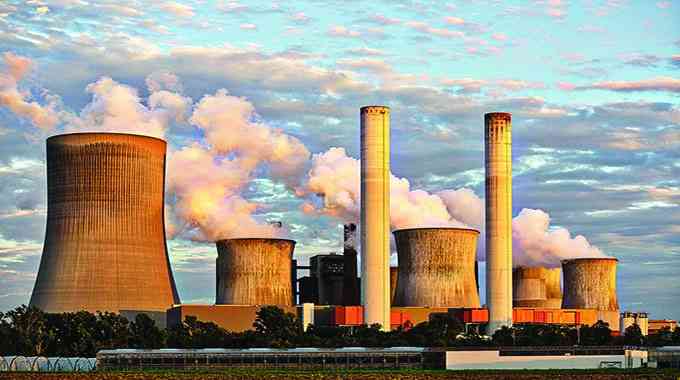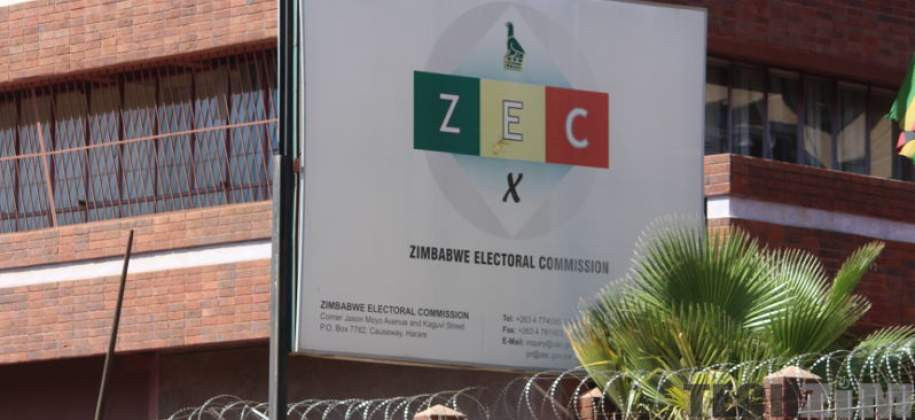
HWANGE is a small town in Zimbabwe which is prominent for its rich coal deposits. According to available data, its urban population is only 40 241, and has remained stagnant since 2012.
The major reason for Hwange's failure to grow its population can be reasonably attributed to an over-reliance on a few economic sectors, along with a failure to create more sophisticated industries out of the available economic opportunities.
Coal mining and power generation for the national electricity grid are the major economic activities, which support the town, whilst tourism, although present, plays a peripheral (distant) role.
When an area is greatly dependent on just one or a few types of economic activities for its survival, it usually comes with great challenges and risks.
These include generally low incomes for its residents and an oversized exposure if those few economic activities become less-rewarding. For example, if coal was to be phased out, the town of Hwange would actually collapse and its people would be thrust into famine.
It could even become a ghost town if the remaining residents migrate to other areas in large numbers.
However, due to Hwange's huge coal deposits and other advantages which will be explained later, it is quite possible to make the town and its rural hinterlands, richer. It is also possible to use Hwange to strengthen Zimbabwe's economy, even within the short-term (within 1 year).
Deepening investments in coal
- Poaching syndicates trap vulnerable villagers
- Power cuts spur Zimbabwe’s green energy revolution
- Power crisis needs practical solutions
- Youth candidates debate manifestos on social media
Keep Reading
Hwange holds a significant portion of Zimbabwe’s coal deposits, which are understood to surpass 10 billion tonnes. At the current extraction rate of around 4,2 million tonnes of coal per year (as of 2022), it will take Zimbabwe much more than 200 years to utilise its deposits.
Considering the available national deposits of more than 10 billion tonnes, it is fair to argue that Zimbabwe needs to mine a minimum of 20 million tonnes of coal each year.
If the country uses four million tonnes for its power stations, the other 16 million could be processed into different types of manufactured products, locally, or be exported as thermal coal to be used by power stations in other countries.
Exporting 16 million tonnes of coal would earn Zimbabwe a minimum of US$1 billion each year, at the prevailing local price of US$65 per tonne. This would obviously translate into more jobs for locals, and greater tax revenues for government, among other things.
There are already a number of foreign companies which have shown great interest in extracting more coal from Hwange. These include; Sable Mining, China's Guangdong Bureau of Coal Geology, China Railway International, Nkosikhona Holdings, etc. It is, therefore, advisable for the government to encourage the companies to actually invest whilst it creates a suitable business environment, for such firms to operate efficiently and produce high output.
Zimbabwe's coal can also be used to expand the country's electricity generation capacity. Currently, Zesa's power station in Hwange, produces around 1 000 MW for Zimbabwe's national electricity grid.
Since local coal resources are abundant, the country needs to set up more coal-fired power stations. South Africa, for example, has almost 40 000MW of installed coal capacity (power stations).
This is 40 times more than Zimbabwe's own capacity of 1 000 MW. However, South Africa's population (of 63 million) is only four times larger than Zimbabwe's.
If Zimbabwe were to emulate South Africa's utilisation of coal in electricity generation, it would have had coal power stations with a capacity of 10 000MW.
So, the coal capacity of 1 000 MW simply shows that Zimbabwe is not doing enough to use its coal for power generation.
In order to avoid a push-back against Zimbabwean export industries, renewable energy will also be needed so that exporters can wheel (buy) it from the respective producers (of renewable energy) who also distribute it on the national electricity grid.
If export industries use renewable energy, they will be exempt from forthcoming harsh taxes on exports which are produced using fossil-fuels. The European Union will begin implementing such harsh taxes from 2026, which is only 2 years away.
The emergence of Mvuma-based Dinson Iron and Steel Company, which aims to be the largest steel-making plant in sub-Saharan Africa, will also lead to greater demand for Hwange's coal resources.
This is because coal is a critical input in the manufacturing of iron and steel. The revival of Zisco steel, another company in the steel sector, which is based in the Midlands Province of Zimbabwe, will similarly add to the demand for local coal.
In all this, the residents of Hwange will get more jobs, whilst their rising prosperity would attract diverse businesses in the retail, tourism, manufacturing and other economic sectors.
In other words, deepening coal investments (the diversity and quantity of coal-based industries) in Hwange, will also help to diversify its local economy. In all this, the government's tax revenues and the country’s economy will also improve.
Coal can be used to produce petrol, diesel, jet fuel (aeroplane fuel), rubber, plastics, etc. This can be facilitated through various coal-to-liquid technologies.
It (coal) can also be used to produce hydrogen, using a process known as gasification. South Africa currently supplies 20% of its annual liquid-fuel requirements (including petrol and diesel) from its own coal resources, using the previously mentioned coal-to-liquid technologies.
Zimbabwe also needs to invite investors who can convert local coal into petrol, diesel and other products, in order to benefit from its coal at the highest level.
This would reduce the country's import bill, since liquid fuels are the largest import component in Zimbabwe's international trade. Zimbabwe imports a minimum of 2 billion litres of petrol and diesel (combined), each year.
If 20% of that requirement was to be produced locally, using Hwange's coal resources, that would lead to local production of at least 400 million litres of liquid fuels each year.
Once more this would translate into more jobs and greater prosperity for the residents of Hwange and the country at large.
Zimbabwe's coal can also be used to manufacture hydrogen. Hydrogen can be used in various applications, which include providing heat for the boiling of water (or for producing steam) in power stations. It can also be used to produce ammonia (used for fertilisers or explosives), and methanol (used in inks, adhesives, pharmaceuticals, etc), as an input in the manufacturing of high-quality steels (through direct iron reduction), and as a fuel for hydrogen-powered cars and other forms of transportation (including hydrogen-powered trains).
Hydrogen is actually mainly used in refining crude oil to remove unwanted impurities (sulphur compounds) and to obtain high-grade petrol.
It is also used in the manufacturing of biodiesel (a plant-based substitute for diesel fuel) or airplane fuel (jet fuel also known as kerosene). As of 2018, as much as 2% of the world's coal output was deployed towards the manufacturing of hydrogen.
Building a hydrogen value chain based on local coal resources might even result in the emergence of industries which use it as an intermediate good.
This would then place Zimbabwe in a great position to manufacture and also export; hydrogen itself, ammonia-based fertilisers, military weaponry, jet fuel, pharmaceutical products, high-quality steels, refined crude oil, other petrochemical products, etc.
Assuming that a significant part of the hydrogen value chain would be based in Hwange, the town's locals would have access to even more jobs, including the sophisticated ones which would be availed by such specialised industries.
Zimbabwe as a country would also benefit in so many ways. As a starting point, Zimbabwe may invite the following South African companies, which already produce hydrogen from coal; Sasol Limited, Afrox, Air Liquide, etc.
Hwange thermal power station produces a by-product known as coal ash. Coal ash is termed hazardous waste because it contains heavy metals, among other things.
However, if treated, it can be used for several productive purposes. These include input for road construction, bricks, cement, mine backfilling (refilling excavated holes), mine drainage treatment (neutralising or isolating mine waste), soil improvement, etc.
It (coal ash) is also rich in phosphorous and can be used in the manufacturing of fertilisers. Sadly, major Zimbabwean construction companies are not connected to Hwange thermal power station, which produces abundant coal ash.
In that regard, relevant government ministries should strive to facilitate such linkages so that the economy is connected and made as circular as possible.
Local tertiary institutions should also be encouraged to implement research which pursues further possible uses for Hwange's coal ash.
Since coal ash is classified as a hazardous waste, the Ministry of Environment Climate and Wildlife should strive to responsively and quickly (within four weeks) process waste management licences, which facilitate the handling of coal ash by local recyclers (such as construction companies).
The licences should also be issued at an affordable price so that small to medium enterprises (SMEs) are not excluded from using this material (coal ash) in their own operations.
Decommissioned open-cast coal mines can also be turned into artificial lakes, as a means of attracting tourists. Additionally, other obsolete open-cast mines can provide abundant land for erecting solar panels and establishing significant solar power projects.
Increased inspections to ensure that the town of Hwange is not host to illegal mines would also be beneficial, as it would plug tax revenue leakages (for government) and mining practices which are harmful to the environment, etc.
In order to preserve the tourism status of the nearby Victoria Falls, the aforementioned proposed coal-based industries should be established in strategic locations within Hwange.
The industries should not produce air, land, water and noise pollution for the resort town of Victoria Falls.
It is also important to emphasise that the use of technologies, which limit the negative environmental impact of coal-based industries should be greatly encouraged.
Desirable clean coal technologies may include; desulphurisation (which reduces the amount of sulphur dioxide released into the atmosphere by power stations), fabric filters to remove ash from gases that are released by coal processors, electrostatic precipitators (filtration devices that remove particles from flowing gas), etc.
Ideally, the increase in the use of coal should also be accompanied by mandatory afforestation and reforestation programs.
The deliberate and widespread planting of trees would reduce the negative effects associated with pollution arising from coal industries.
Coal is understood to worsen the degradation of the world's climate as its emissions of carbon dioxide, nitrogen oxides and sulphur dioxide, can trap the sun's heat in the atmosphere, leading to higher average temperatures.
Additionally, coal can increase the frequency of occurrences of sicknesses such as asthma among local populations, which live close to coal-based industries.
It also causes land pollution and degradation, if holes and trenches created during open-cast coal mining are not refilled.
- Tutani is a political economy analyst. — [email protected]











